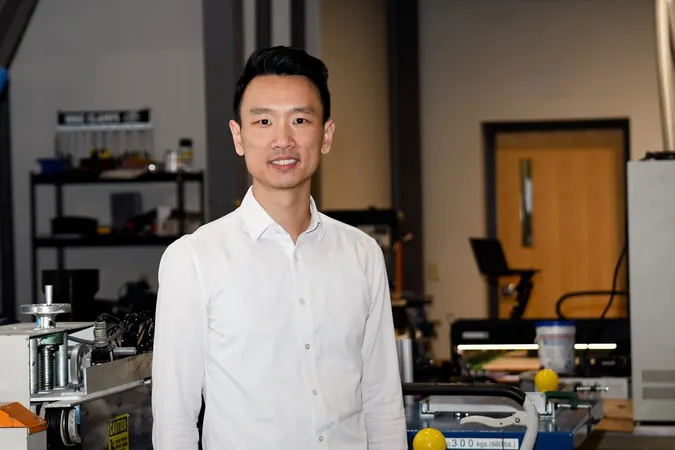
AnaliSwift Partners with NASA to Pioneer Reusable Spacecraft Technology
2024-11-20
Author: Yu
Groundbreaking Partnership for Sustainable Space Exploration
In a groundbreaking move towards sustainable space exploration, AnalySwift LLC, a company affiliated with Purdue University in West Lafayette, Indiana, has secured a Phase I Small Business Technology Transfer (STTR) contract from NASA worth $156,424. This contract marks a significant step in developing advanced technologies that facilitate the reassembly of thermoplastic composite spacecraft components for secondary use.
Project Leadership and Vision
Led by Kawai Kwok, an associate professor in Purdue's School of Aeronautics and Astronautics, the project aims to revolutionize the way spacecraft infrastructures are managed. According to Allan Wood, the president and CEO of AnalySwift, the long-term vision for crewed missions to destinations like the Moon and Mars requires sustainable construction methods that can operate efficiently in space. He emphasized the challenges faced in transporting large and heavy materials for such missions.
Innovative Disassembly Method
"In this project, we propose an innovative method for disassembling and reconfiguring thermoplastic composite joints in space," Wood stated. "This approach transitions us from the conventional single-use model to a more sustainable, scalable framework.”
Kwok also highlighted the versatility of this method, explaining how components can be repurposed rapidly for different mission needs. For instance, the structural elements intended for a lunar lander could be adapted into supports for solar arrays, showcasing the adaptability of their technology.
Advanced Simulation Technology
A key technology in this initiative is the multiphysics modeling framework that will simulate the bonding and debonding processes of thermoplastic composites using embedded carbon nano-heaters. This advanced simulation tool will enhance the capacity to forecast material behavior under various conditions—a vital aspect for future crewed missions.
Composite Heater Layer Development
Furthermore, as part of the project, AnalySwift plans to develop a composite heater layer embedded with nanostructured carbon fillers. This innovative layer, crafted from the same thermoplastic matrix as the existing composite components, will assist in reaching processing temperatures necessary for efficient disassembly and reassembly.
According to Kwok, these lightweight, conductive nanocarbon films, enclosed in semicrystalline thermoplastics, will allow for resistance welding and encourage a seamless transition between different configurations of spacecraft components. This method dramatically lowers the logistical demands for delivering technology to space, potentially reshaping how future missions are executed.
Research and Industry Applications
Liang Zhang, a senior research scientist at AnalySwift, emphasized that the company will also enhance engineering tools to ensure reliable multiphysics simulation of composite structures. “We are not just creating theoretical models; we are also developing practical tools that can apply to a variety of industries beyond aerospace, including defense and automotive,” Zhang said.
Broader Implications of the Technology
The implications of this technology extend far beyond space applications. Wood noted its potential in sectors such as energy, electronics, and even medical devices. The framework developed could facilitate advanced simulations for high-performance thermoplastics and enable effective repair capabilities, further enhancing the utility of reusable components.
Conclusion and Future Prospects
As NASA and AnalySwift embark on this transformative journey, the potential for a new era of sustainable and efficient space exploration becomes increasingly tangible. The ability to repurpose spacecraft infrastructure not only promises environmental benefits but also paves the way for more ambitious missions into the cosmos. Keep an eye on this innovative project as it develops—this could be the future of space travel!

 Brasil (PT)
Brasil (PT)
 Canada (EN)
Canada (EN)
 Chile (ES)
Chile (ES)
 España (ES)
España (ES)
 France (FR)
France (FR)
 Hong Kong (EN)
Hong Kong (EN)
 Italia (IT)
Italia (IT)
 日本 (JA)
日本 (JA)
 Magyarország (HU)
Magyarország (HU)
 Norge (NO)
Norge (NO)
 Polska (PL)
Polska (PL)
 Schweiz (DE)
Schweiz (DE)
 Singapore (EN)
Singapore (EN)
 Sverige (SV)
Sverige (SV)
 Suomi (FI)
Suomi (FI)
 Türkiye (TR)
Türkiye (TR)